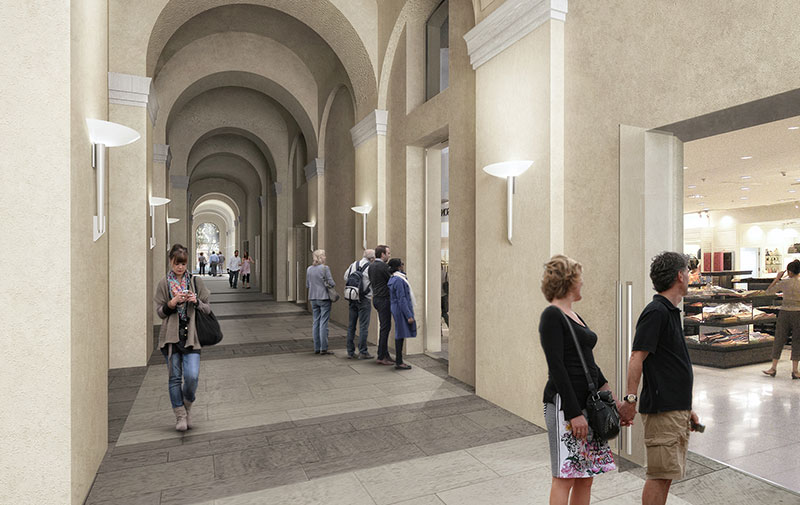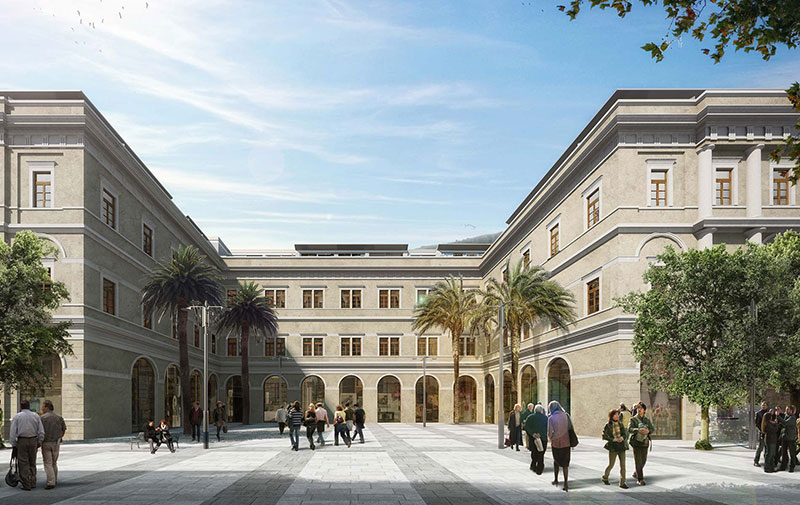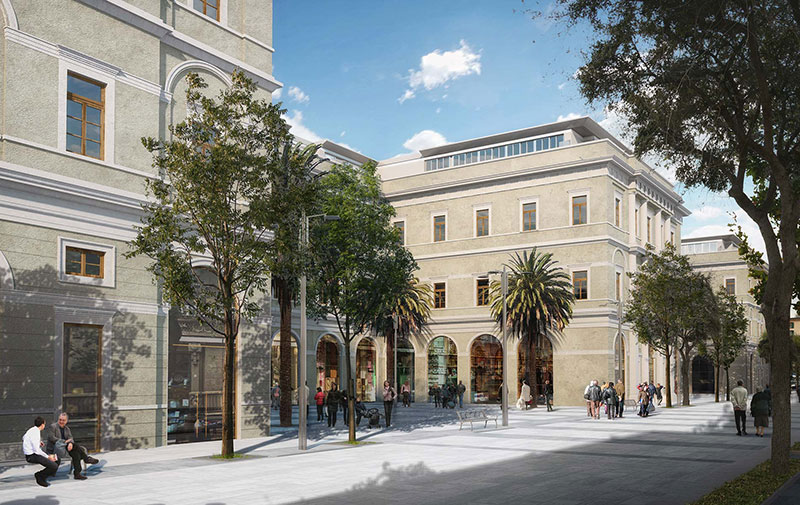
At street-level, the layout has been reconsidered as a large unitary space available for use by citizens and for commerce. The old inner courtyards of the former hospital, which historically served as a ceremonial space and a walkway, have been transformed into new open piazzas conceived as the spontaneous expansion of Corso Italia for which complete pedestrianisation is envisaged. Well-lit pedestrian tunnels connect the latter with Via Giacchero in a dynamic, bi-univocal building-city relationship, rather common in European contexts. The interior and exterior intermingle, rendering it easy for everyone to utilise the upper floor that can be reached through the faithfully-restored monumental staircase or via the convenient lifts where the public and private offices are located along with the charming chapel also restored and given back to the community.
The current Corso Italia roadway and that of the existing footpath on the San Paolo side (set to be removed), will be entirely paved in flat two-tone grey granite slabs. This paving will extend seamlessly throughout the public areas inside and outside the building, even on the pedestrian stretches of Via Giacchero, Corso Mazzini and Piazza Giulio II, so as to create a public pedestrian space with continuity, both in terms of use and materials.
The same criterion will be applied to the design of the greenery in the public spaces that will support the new "outgoing" vocation of the former hospital with the aim of preserving the historical-cultural values of the existing ornamental vegetation. For this reason, it was decided to re-use tree species already present in the urban context of Savona and historically consolidated in ornamental use, albeit with a slightly different distribution in respect of that currently existing.
56 mature plants will be planted in an equal number of individual plots including 11 new oaks on Corso Italia (Quercus Ilex with a trunk diameter of 25-30 cm and an average height of around 400 cm, replacing an equal number of oaks in poor vegetative state), 8 new holm oaks on Piazza Giulio II (with a trunk diameter of 25-30 cm and an average height of about 400 cm, substituting 7 Japanese privet - Ligustrum Japonicum - lacking in ornamental value and less compatible with the greenery within the nearby areas), 4 new palm trees on Corso Mazzini (Phoenix Canariensis with a trunk height of 350 cm, replacing a privet), 16 new palm trees in the two new piazzas on Corso Italia (Washingtonia Robustas with a trunk height of 350 cm), 17 new myrtle-leaved orange trees on Via Giacchero (with a trunk diameter of 9 cm and an average height of about 190 cm).
In total, 19 plants will be replaced, as they are of low value or in poor condition, whilst 37 more will be added. Two holm oaks in good condition will be left in their current position on Corso Italia whilst five holm oaks also on Corso Italia, not consistent with the new design of the public spaces but still in good condition, will be transplanted in other public areas of the city.
The entire separated waste collection system throughout the areas surrounding the building has been redesigned in line with the general design, to permit easy access and collection. Two garbage collection sites appropriately integrated in pittosporum hedges, also useful for separating pedestrians from vehicular traffic, will be created on Corso Mazzini, whilst a garbage collection site will also be built in Piazza Giulio II. On Via Giacchero, the garbage collection site will be placed in a retractable compartment along the perimeter wall of the former hospital.
The public lighting and outdoor seating will be completely renewed.


